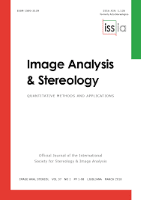
Image Analysis & Stereology
metrics 2024
Unlocking the Potential of Image Analysis
Introduction
Image Analysis & Stereology is a premier open-access journal dedicated to the dynamic fields of image analysis and stereological methods, published by the International Society for Stereology. Since its inception in 2000, this journal has provided an essential platform for researchers and professionals to disseminate their findings and share innovative methodologies across various disciplines, including Acoustics, Biotechnology, Computer Vision, and Materials Science. As a respected publication with a broad scope, the journal holds a Q3 ranking across multiple categories and is indexed in Scopus. With its commitment to advancing research and enhancing academic discourse, Image Analysis & Stereology is vital for anyone involved in quantitative imaging studies, offering valuable insights and access to groundbreaking research in a rapidly evolving landscape.
Metrics 2024
 0.30
0.30 0.80
0.80 0.70
0.70 30
30Metrics History
Rank 2024
Scopus
IF (Web Of Science)
JCI (Web Of Science)
Quartile History
Similar Journals

Image Processing On Line
Fostering global knowledge exchange in cutting-edge technologies.Image Processing On Line (ISSN: 2105-1232, E-ISSN: 2105-1232) is a pioneering open-access journal published by IMAGE PROCESSING ONLINE-IPOL since 2011, dedicated to advancing the field of image processing through the dissemination of high-quality research and innovative methodologies. Based in France, the journal serves as a platform for researchers, professionals, and students to share insights and breakthroughs in the rapidly evolving domains of Signal Processing and Software. With its current ranking as Q4 in both categories according to the 2023 category quartiles, and a Scopus ranking highlighting its significance within the computer science field, the journal is focused on nurturing contributions that push the boundaries of image processing techniques. Accessible to a global audience, Image Processing On Line is crucial for those engaged in both theoretical explorations and practical applications, ensuring a collaborative repository of knowledge that fosters innovation and development in this vital area of technology.

Journal of Innovative Optical Health Sciences
Bridging Science and Healthcare with Optical InnovationsWelcome to the Journal of Innovative Optical Health Sciences, an esteemed platform dedicated to the interdisciplinary exploration of optical technologies in health sciences. Published by World Scientific Publishing Co Pte Ltd, this open-access journal has been at the forefront of innovation since its inception in 2008, facilitating vital discussions and research advancements. With a notable impact factor and a commendable ranking in various scientific categories—including Q2 in Atomic and Molecular Physics, Q3 in Biomedical Engineering, and Q3 in Medicine (miscellaneous)—the journal serves as an essential resource for researchers, professionals, and students alike. Hailing from Singapore, we aim to bridge the gap between optical science and healthcare, promoting breakthroughs that enhance patient care and medical practices. Explore our diverse collection of studies and join a vibrant community committed to advancing knowledge in this cutting-edge field.

Journal of Medical Imaging
Transforming Healthcare Through Cutting-Edge Imaging ResearchThe Journal of Medical Imaging, published by SPIE-SOC PHOTO-OPTICAL INSTRUMENTATION ENGINEERS, is an esteemed publication in the field of medical imaging, playing a pivotal role in advancing the discipline since its inception in 2014. With an ISSN of 2329-4302 and an E-ISSN of 2329-4310, this journal has garnered significant recognition, evidenced by its Q2 ranking in 2023 within the critical category of Radiology, Nuclear Medicine, and Imaging. The journal is dedicated to presenting cutting-edge research and innovations that enhance diagnostic imaging techniques and methodologies, appealing to a diverse audience of researchers, professionals, and students alike. Offering valuable insights into the interplay of optics and imaging technologies, it serves as a crucial resource for fostering knowledge and collaboration in the medical community. Notably, it holds a competitive rank of #136 out of 333 in its Scopus category, placing it in the 59th percentile—a testament to its influence and relevance in ongoing medical research. Therefore, the Journal of Medical Imaging stands out as an essential platform for disseminating transformative findings and innovations in healthcare imaging.
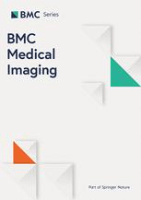
BMC MEDICAL IMAGING
Elevating Standards in Diagnostic Imaging Through Open Knowledge.BMC Medical Imaging is a premier open-access journal dedicated to advancing the field of radiology, nuclear medicine, and imaging technologies. Published by BMC in the United Kingdom, this journal serves as a vital resource for researchers, clinicians, and students, fostering a collaborative environment for sharing innovative findings and methodologies in medical imaging. With a commendable impact factor and an impressive Scopus ranking within the top 35% of its category, BMC Medical Imaging provides a platform for high-quality research to be disseminated widely and freely since its inception in 2001. The journal aims to cover a diverse array of topics, from advanced imaging techniques to their clinical applications, enhancing the understanding and effectiveness of diagnostic practices. By contributing to the body of knowledge and facilitating open access to research, BMC Medical Imaging plays a pivotal role in shaping the future of medical imaging and improving patient care.

Computer Methods and Programs in Biomedicine
Unleashing the Power of Computing in Biomedical Discoveries.Computer Methods and Programs in Biomedicine, published by ELSEVIER IRELAND LTD, is a leading journal at the intersection of computer science and biomedical research. With an impressive impact factor evidenced by its Q1 rankings in multiple categories—Computer Science Applications, Health Informatics, and Software—this journal ranks highly among peer publications, showcasing its significance in advancing interdisciplinary research. Covering a wide array of topics since its inception in 1985, it is particularly crucial for those invested in the innovation of computational methods applied to the biomedical field. The journal has established a strong reputation, with Scopus rankings placing it in the top percentiles across its relevant sectors, including the 14th position out of 138 in Health Informatics. Researchers, practitioners, and students looking to explore current trends, methodologies, and advancements in biomedical applications of computer science will find this journal an invaluable resource.
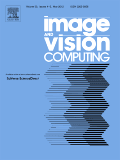
IMAGE AND VISION COMPUTING
Illuminating the path of progress in image analysis and recognition.Image and Vision Computing, published by Elsevier, serves as a leading international journal focused on the dynamic fields of computer vision, pattern recognition, and signal processing. With its esteemed Q1 category rankings in these areas and an impressive standing in Scopus metrics, where it ranks 19th in Computer Vision and 23rd in Signal Processing, this journal has firmly positioned itself at the forefront of academic research and innovation. Established in 1983, it continues to publish cutting-edge research that drives advancements in technology and applications across various domains. The journal is committed to disseminating high-quality, peer-reviewed articles that address significant challenges and propose novel solutions, making it an essential resource for researchers, practitioners, and students alike. While not an open access journal, Image and Vision Computing offers a wealth of valuable insights into the ever-evolving landscape of visual computing technologies.
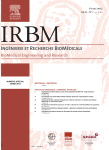
IRBM
Advancing Knowledge at the Intersection of Science and EngineeringIRBM, published by Elsevier Science Inc, stands at the forefront of research in the domains of Biomedical Engineering and Biophysics, boasting impressively high rankings with a Q1 category in both fields according to the 2023 evaluations. With an effective focus on cutting-edge innovations and methodologies, IRBM provides a vital platform for researchers, professionals, and students alike seeking to disseminate and access groundbreaking findings and developments. Its strong presence in the Scopus database, with ranks of #12 in Biochemistry, Genetics and Molecular Biology and #42 in Biomedical Engineering, places it in the top percentile of impactful journals in the field, making it a crucial resource for advancing knowledge and fostering collaboration. While the journal maintains a traditional subscription model, it continues to attract a diverse readership eager for insightful studies and reviews that push the boundaries of science and engineering. With a projected convergence of years extending to 2024, IRBM promises to remain a significant contributor to the ongoing dialogue in the life sciences.

MEDICAL IMAGE ANALYSIS
Elevating Medical Practices with Cutting-Edge Image Analysis.MEDICAL IMAGE ANALYSIS, published by ELSEVIER, stands as a premier journal in the fields of computer science and medical imaging, particularly focusing on the intersection of Computer Graphics, Computer Vision, and Health Informatics. With an impressive impact factor and a consistent classification in the Q1 quartile across multiple domains including Radiology and Radiological Technology, this journal attracts high-quality research and innovative methodologies that significantly contribute to advancing medical practices and technology. Based in the Netherlands, and covering a gamut of topics from 1996 to 2025, it serves as a vital platform for disseminating cutting-edge studies aiming to enhance diagnostic accuracy and treatment planning through sophisticated imaging techniques. While it does not offer Open Access options, the journal’s rigorous peer-review process and high Scopus rankings—positioning it within the top percentiles across several categories—further solidify its reputation as an essential resource for researchers, professionals, and students committed to the evolution of medical imaging.
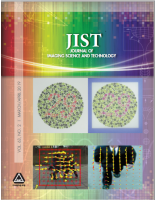
JOURNAL OF IMAGING SCIENCE AND TECHNOLOGY
Exploring the Frontiers of Imaging ScienceJOURNAL OF IMAGING SCIENCE AND TECHNOLOGY, published by I S & T - SOC IMAGING SCIENCE TECHNOLOGY, is a pivotal resource in the realms of imaging science, optics, and materials. With its ISSN 1062-3701 and E-ISSN 1943-3522, this journal has been disseminating influential research since 1993 and continues to be a vital platform for scholars up to 2024. Despite its varied quartile rankings across disciplines—such as Q4 in Atomic and Molecular Physics and Optics, and Q3 in Chemistry (Miscellaneous) and Electronic, Optical and Magnetic Materials—it provides an essential forum for innovative ideas and advancements. The journal’s focus on interdisciplinary connections encourages collaboration among researchers in the fields of chemistry, computer science, and physics. Researchers, professionals, and students interested in exploring the latest imaging technologies and methodologies will find invaluable insights within its pages, making it a significant addition to their academic libraries.

IEEE Journal of Biomedical and Health Informatics
Exploring New Frontiers in Health and Biomedical TechnologyIEEE Journal of Biomedical and Health Informatics is a premier publication dedicated to advancing the field of biomedical and health informatics. Published by the esteemed IEEE-Inst Electrical Electronics Engineers Inc, this journal boasts a notable impact within various disciplines, ranking in the top quartile (Q1) across key categories such as Biotechnology, Computer Science Applications, Electrical and Electronic Engineering, Health Informatics, and Health Information Management as of 2023. With a strong Scopus ranking—placing it at #11 in Health Informatics and #6 in Health Information Management—it serves as a vital resource for cutting-edge research and innovative practices. Open Access options enhance accessibility, fostering collaboration among researchers, professionals, and students. Since its inception in 2013, the journal has been committed to publishing high-quality, peer-reviewed articles that explore the pivotal intersection between technology and healthcare, thereby contributing significantly to the evolution of medical practices and patient care.